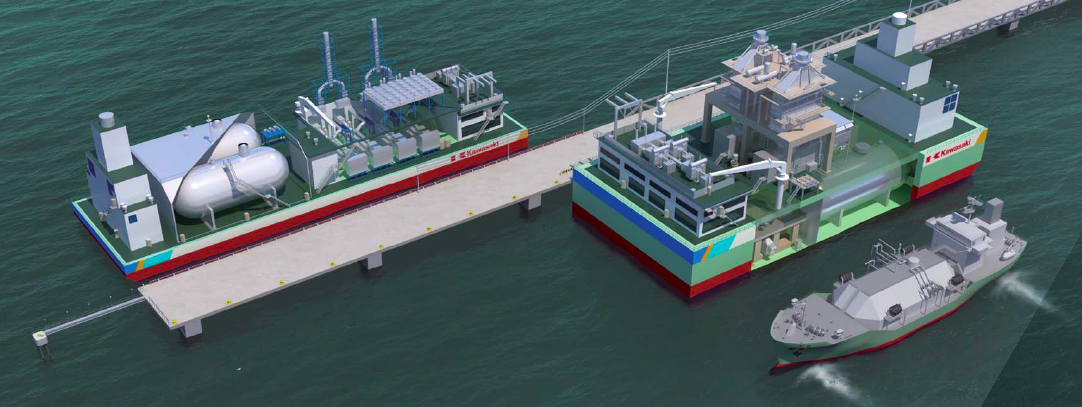
Kawasaki Heavy Industries reports that it has obtained approval in principle (AiP) from DNV GL for the combined cycle version of its liquefied natural gas (LNG) fuelled floating power plant.
Approval has been granted under DNV GL’s 2018 certification rules for floating gas fuelled power plants.
The Kawasaki version is an integrated system in which the hull is outfitted with LNG fuel tanks, a regasification unit, power generation equipment and switchyard.
Kawasaki says it expects demand for this type of power plant to be strong in countries where electricity needs are rapidly increasing, such as in south east Asia, especially islands, and areas lacking suitable sites for onshore power plants.
LNG has a cost advantage over heavy fuel oil, is cleaner than coal and HFO, and is expected to be increasingly available in the coming years, with an expanding range of applications.
Anatomy of the floating power plant
The plant consists of two Kawasaki L30A gas turbines, two heat recovery steam generators, a steam turbine, LNG fuel tanks and other main components all manufactured by Kawasaki, thus “enabling reliable service in terms of delivery, product quality and maintenance”, the company says.
The L30A gas turbine achieves 54.4% efficiency in combined cycle (40.3% simple cycle) and employs Kawasaki developed dry low emission (DLE) combustors resulting in NOx emissions of 15 ppm or less (at 15% O2).

In addition, provision for borescope inspections and a module exchange concept facilitate maintenance while longer overhaul intervals reduce overall life cycle costs.
The aluminium LNG tanks, with the same specifications as for small domestic LNG carriers/LNG bunkering vessels, are located inside the hull, while the gas turbines are at deck level with the vertical HRSGs installed above them, thus reducing the equipment footprint and permitting a smaller hull size.
Operational compatibility of floating power plants
The multiple shaft configuration enables compatibility with a wide range of loads and provides redundancy for main components.
The floating LNG power plants combine Kawasaki’s long experience of designing and building various types of LNG vessel with its power plant offerings.
In May this year Kawasaki received an AiP from DNV GL for a reciprocating engine based version of its floating LNG power plant. This employs four Kawasaki KG-18-V gas engines.
Comparison of the two floating plant versions:
| Combined cycle | Gas engine | |
| Power output | 80 MW | 30 MW |
| Efficiency | 54.4% | 49.5% |
| Heat rate | 6622 kJ/kWh | 7273 kJ/kWh |
| Barge size | L 110 m x W 48 m x D 20 m | L 120 m x W 36 m x D 6.5 m |
| LNG tank capacity | 5500 m3 x 2 units (2 weeks) | 3500 m3 x 2 units (4 weeks) |






